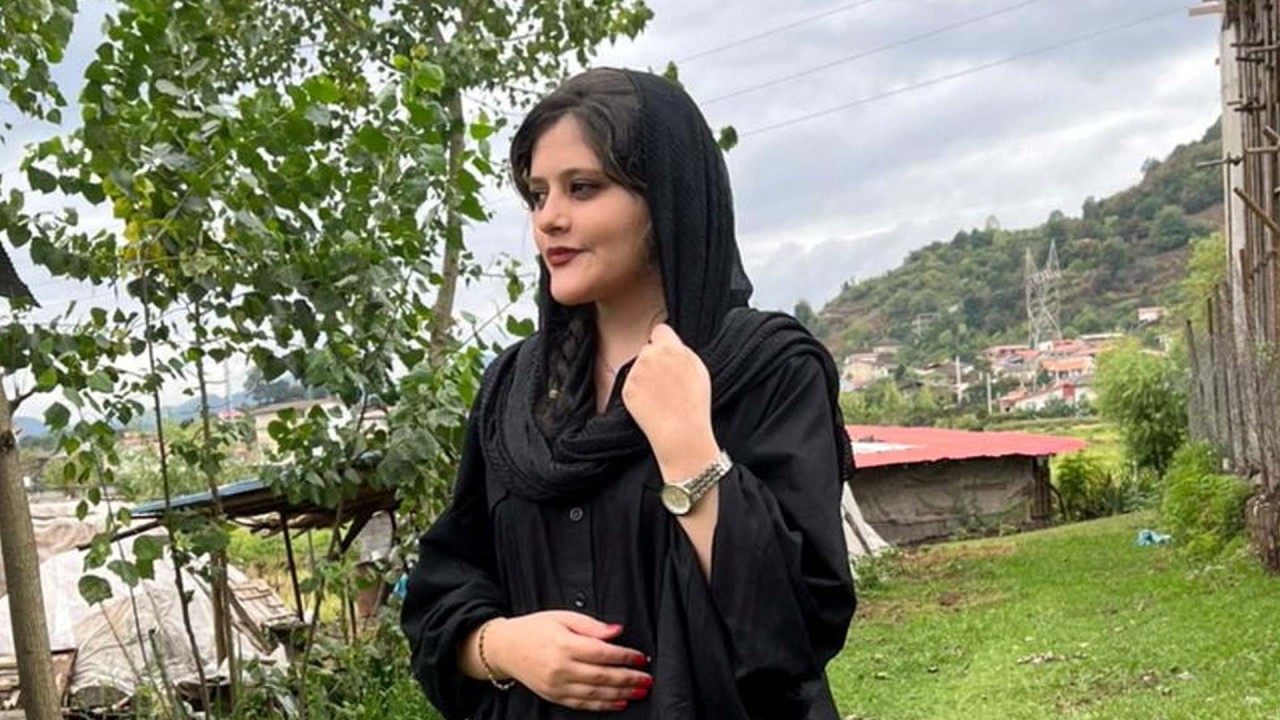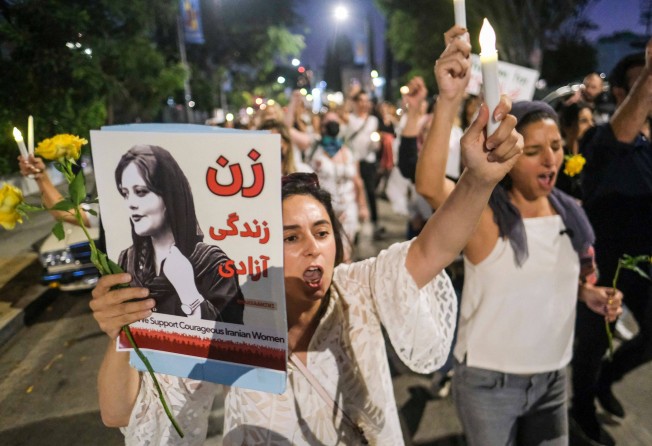
02:32
Iranian women join hijab-burning protest after Mahsa Amini dies while in ‘morality police’ custody

The spiralling unrest in Iran over a young woman’s death is a cautionary tale for Indonesia, say rights activists in the world’s largest Muslim-majority nation, where women face hundreds of systemic rules making headscarves obligatory.
At least 40 demonstrators have reportedly been killed across Iran after Mahsa Amini, a 22-year-old Kurdish woman, was arrested in Tehran by so-called morality officers for allegedly improperly wearing her hijab, the Muslim headscarf for women. She died in custody amid rumours she had been beaten to death.
Some women have burned their hijabs and cut their hair short as an act of defiance, as protests spread across the Middle East and as far as Europe and North America. In Indonesia, online commentators have expressed solidarity with Iranian women, while also warning the Southeast Asian nation could face the same fate if religious fundamentalists are not reined in.
“I think all regulations that make the hijab mandatory in Indonesia must be revoked, if we don’t want to copy the mistakes of the Iranian government, as well as the Saudi Arabia and Afghanistan governments,” said Andreas Harsono, a Jakarta-based researcher with Human Rights Watch.
“Women are free to wear the hijab; we don’t need to enforce it. Women who don’t wear the hijab should be afforded the same respect as those who wear it. It’s an individual choice,” added Harsono, who has studied hijab rules in Indonesia extensively.
While Muslim women in Indonesia are obliged to wear the religious headscarf in various places and on occasions, the phenomenon was relatively recent, he noted.
The first time Indonesia passed a regional-level law mandating the hijab was in 2001, three years after a people-led revolution toppled Suharto.
The dictator took steps to repress Islam during the initial parts of his 32-year regime because he viewed the religion as a threat to national unity. He went as far as banning hijabs in secular state schools in 1982, “as a response to the 1979 revolution in Iran that made hijab mandatory for women there”, Harsono said.
The Iranian revolution had led to the ousting of Shah Mohammad Reza Pahlavi, who sought to replace Islamic laws and norms with Western ones, including banning traditional Muslim attire.
As opposition towards Suharto’s policies grew however, he made a U-turn in the 1990s, courting large Muslim groups and approving the establishment of the Indonesian Association of Muslim Intellectuals. In 1991, he also allowed students to wear the hijab at schools. The Suharto family also went to Mecca to carry out the haj, the annual Muslim pilgrimage, while his eldest daughter began donning a headscarf from 1989.

The attempts to repress Islam in Iran and Indonesia often lead to comparisons of how hijab-wearing has evolved in the two states.
“There are some parallels between Indonesia and Iran in this respect. If you compare the regimes of the Shah and Suharto, they were repressing Islam and Islamic identity,” said Julia Suryakusuma, director of the Gender and Democracy Center at the Jakarta-based Institute for Research, Education and Information on Economy and Social Affairs.
“When the people were fighting against the Shah, non-conservative women were wearing the hijab just as a symbol of protest,” she said. “Under Suharto, the military regime was smarter because they befriended political Islam. The Suharto regime gave signs it was friendly towards Islam.”
But even as Indonesia continued being mostly secular before the turn of the 21st century, Islamic fundamentalism started emerging in the 1980s due to the spread of Saudi-funded religious schools, which teach Wahhabism in their curriculum, Suryakusuma said.
Wahhabism is a puritanical movement that promotes a narrow view of Islam, including that women must wear the hijab.

Today, 24 out of Indonesia’s 34 provinces have hijab mandates at schools, government institutions, or public places, Harsono said. He estimated around 135,000 schools in these provinces require their female students to wear hijab, whether they are Muslim or not.
There are also 64 government regulations, with two on the national level, that make hijabs compulsory for students and civil servants. Those who do not comply could face expulsion or dismissal, he said.
Women who do not wear hijabs are also often harassed or bullied into submission, activists have noted.
“The enforcement to wear the hijab in Indonesia occurs in closed spaces, in the form of symbolic violence within the family or office. Women who are not veiled are bullied so that they will soon wear the veil,” says Kalis Mardiasih, a female Muslim writer and activist of diversity and gender equality in Islam.
Nevertheless, activists believe that any resistance to hijab rules in Indonesia is unlikely to blow up into nationwide protests such as those in Iran, as the state encourages the empowerment and participation of women in many sectors, including politics.
Save for the ultraconservative Aceh province, Indonesia also does not have any state-sanctioned morality police departments to enforce hijab rules.
However, the increasing grip of Wahhabism among the country’s Muslims opens grounds for concern as more institutions and regions become more conservative, Suryakusuma said.
“In Indonesia, we have had Wahhabism for quite a while and it’s quite worrying because it has managed to infiltrate universities, schools, and the military,” she said.
“Indonesia is not like Iran. But extremist Islam threatens the sovereignty of the state, as the radicals don’t necessarily believe in the law of the state. That’s why we should pay attention to what is happening in Iran, because it could happen here.”